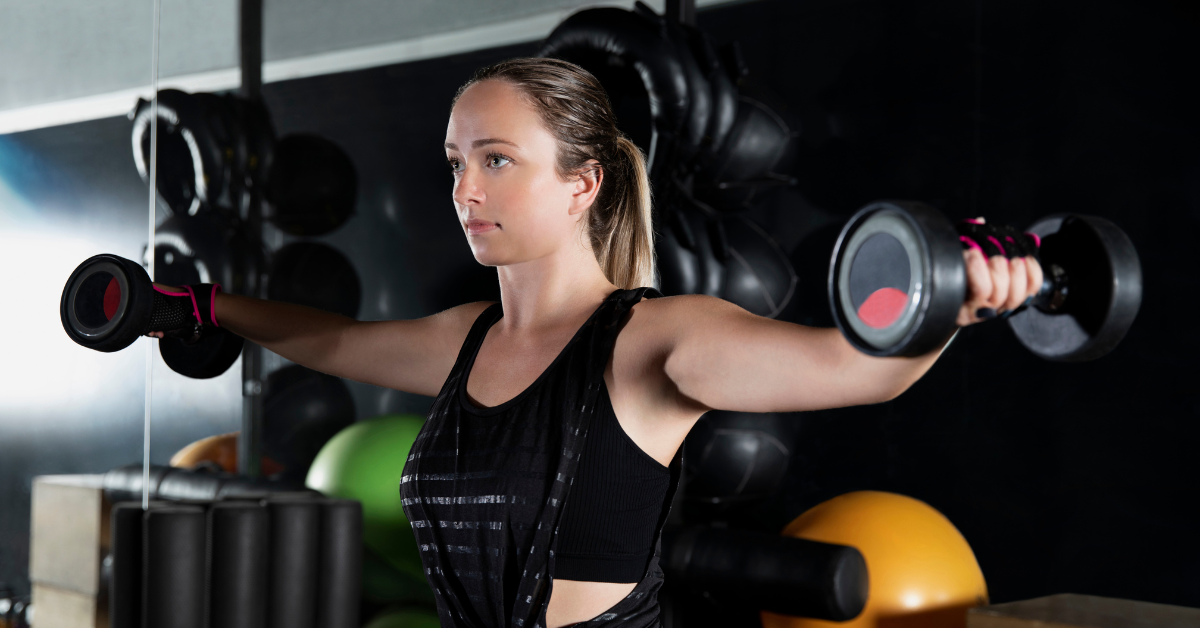Cable front raises are a go-to exercise for building front deltoid strength and shoulder definition. But even seasoned lifters make small mistakes that reduce effectiveness or increase the risk of injury. Whether you’re trying to carve stronger shoulders or simply add variety to your upper body routine, proper form matters more than the weight on the stack.
If you’re using cable front raises as part of your shoulder routine, here are the top 7 mistakes to avoid for safer and more effective results.
Using Too Much Weight
One of the biggest mistakes in cable front raises is going too heavy. This move is designed to isolate the front delts, not turn into a full-body swing. When you load up the stack beyond your control, your body compensates by recruiting the traps, core, and even momentum from the lower body.
When the weight is too heavy:
- Your form breaks down quickly.
- You tend to jerk the cable instead of lifting with control.
- You reduce tension on the deltoid and shift it to other muscles.
Stick with a moderate weight that allows you to move slow and steady. The goal is maximum shoulder activation, not ego lifting.
Swinging or Using Momentum
Another common form breakdown happens when lifters swing their arms. This usually happens as a result of fatigue or lifting too much weight. Swinging shifts the movement away from the delts and puts unnecessary stress on your joints and spine.
Why it’s a problem:
- Swinging reduces time under tension.
- You use your hips and lower back instead of your shoulders.
- It increases your risk of lower back strain.
To fix this, keep a solid stance with knees slightly bent and your core tight. Raise the cable with a controlled pace and avoid leaning backward or using a bouncing motion.
Not Controlling the Eccentric (Lowering) Phase
Most lifters focus only on lifting the weight up. But the eccentric phase, or the lowering part, is just as important. Letting the cable drop quickly reduces the muscle-building benefit of the exercise.
Why slow eccentrics matter:
- They increase time under tension.
- They improve shoulder strength and stability.
- They help prevent injury.
Instead of letting the cable snap back, lower the handle slowly for 2 to 3 seconds. This builds more tension in the delts and makes every rep count.
Lifting Above Shoulder Level
Going too high during cable front raises can cause more harm than good. Lifting the cable handle higher than your shoulder puts stress on the rotator cuff and can lead to shoulder impingement.
What happens when you lift too high:
- The shoulder joint rotates into a risky angle.
- The traps start taking over the movement.
- You increase the chance of shoulder pain or irritation.
Raise the cable just until your arm is parallel with the floor. That’s enough to fully activate your front deltoids without risking shoulder injury.
Gripping the Handle Too Tight
A grip that’s too tight might seem harmless, but it often leads to upper trap engagement and arm fatigue. When you over-grip, your body naturally recruits other muscles to assist, which takes the focus away from your shoulders.
Problems with a tight grip:
- Causes wrist tension and fatigue.
- Shifts tension to your arms and traps.
- Breaks shoulder isolation.
Try using a relaxed grip or use a D-handle with a neutral grip to stay focused on shoulder activation. Keep your wrist in line with your forearm and avoid over-squeezing the handle.
Poor Starting Position
Starting with the cable too far in front or behind your body changes the movement angle and may lead to bad habits. A poor setup reduces the efficiency of the exercise and increases the chance of muscle imbalance.
What to check in your setup:
- Your feet should be shoulder-width apart.
- The cable should be between your legs or directly in front of you.
- Your arm should start slightly in front of your thigh.
Position yourself so the cable offers resistance from the beginning of the movement. This way, your shoulder works from the first inch of the raise.
Not Engaging the Core
Cable front raises aren’t just a shoulder exercise. When done properly, they also require full-body coordination, especially from your core. Many lifters forget to brace their abs and end up swaying or arching their lower back.
Why core engagement is important:
- It helps you stay upright during the raise.
- It protects your spine from unnecessary strain.
- It improves balance and control during the lift.
Before each rep, take a breath, brace your abs, and lock your posture. This allows your shoulders to move freely while your torso stays solid.
Bonus Tip: Don’t Rush Your Reps
Even if you avoid all the common form mistakes, rushing through your sets limits your progress. Fast reps reduce muscle activation and lead to poor control. Aim for slow, focused repetitions with a steady tempo. Think quality over quantity.
Good shoulder training takes attention to detail. Cable front raises are excellent for building the front delts, but only when done right. Avoid these mistakes, fine-tune your form, and you’ll get more from every set without risking pain or injury.










